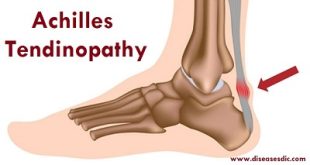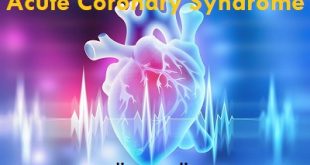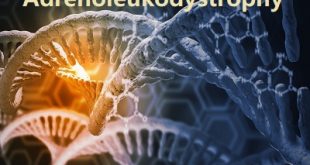Overview – Actinomycosis
Actinomycosis is a rare subacute or chronic bacterial infection that causes both suppurative and granulomatous inflammation. Characteristics include localized swelling with suppuration, abscess formation, fibrosis and sinus drainage of pus containing ‘sulfur granules’.
Actinomycetes are normal colonizing organisms of the oral cavity and may also be present in the lower gastrointestinal and genitourinary tracts. They should be considered facultatively pathogenic commensals, requiring a break in the mucous membranes or devitalized tissue to invade deeper body structures and cause illness.
Types of actinomycetes
- Orocervicofacial usually follows dental manipulation or trauma to the mouth but can occur spontaneously in patients with poor dental hygiene.
- Thoracic: Infection usually results from aspiration of oropharyngeal secretions. May also occur after oesophageal perforation, local spread from cervicofacial or abdominal infection, or from the haematogenous spread.
- Abdomino-pelvic: Acute appendicitis, especially with perforation, accounts for most cases and may present with a mass in the right iliac fossa. Other predisposing factors include gastrointestinal perforation, previous surgery, neoplasia and foreign bodies in the gastrointestinal tract or genitourinary tract.
- CNS: This is rare. It usually occurs as a result of hematogenous spread or direct extension of orocervicofacial infection. CNS disease may include brain abscess, meningitis, meningoencephalitis, actinomycoma, subdural empyema, and epidural abscess.
- Musculoskeletal: This is rare. It is usually caused by spread from adjacent soft tissue but can also be from local trauma or hematogenous spread. The facial bones, especially the mandible, are the most common sites of bone disease.
Pathophysiology
Actinomycetes are prominent among the normal flora of the oral cavity but less prominent in the lower gastrointestinal tract and female genital tract. Because these microorganisms are not virulent, they require a break in the integrity of the mucous membranes and the presence of devitalized tissue to invade deeper body structures and to cause human illness.
Furthermore, actinomycosis is generally a polymicrobial infection, with isolates numbering as many as 5-10 bacterial species. Establishment of human infection may require the presence of such companion bacteria, which participate in the production of infection by elaborating a toxin or enzyme or by inhibiting host defenses. These companion bacteria appear to act as copathogens that enhance the relatively low invasiveness of actinomycetes. Specifically, they may be responsible for the early manifestations of actinomycosis and for treatment failures.
Once the infection is established, the host mounts an intense inflammatory response (ie, suppurative, granulomatous), and fibrosis may then follow. Infection typically spreads contiguously, frequently ignoring tissue planes and invading surrounding tissues or organs. Ultimately, the infection produces draining sinus tracts. Hematogenous dissemination to distant organs may occur in any stage of actinomycosis, whereas lymphatic dissemination is unusual.
Causes
Actinomycosis happens when the Actinomyces species of bacteria spread through the body because of tissue damage. A family of bacteria known as Actinomycetaceae causes it. The bacteria in this family include:
- Actinomyces israelii
- Actinomyces naeslundii
- Actinomyces viscosus
- Actinomyces odontolyticus
Most people have Actinomyces bacteria in the lining of the mouth, throat, digestive tract, and urinary tract, and it is present in the female genital tract.
The bacteria live harmlessly in the body, but they become dangerous if they spread out of their usual environment.
This can happen as a result of:
- Disease
- Tissue damage due, for example, to injury or surgery
If something sharp pierces the internal body tissues, such as a fish bone in the esophagus, the bacteria can spread.
Actinomycosis can also happen if there is tooth decay or gum disease.
As the infection progresses, painful abscesses can form and grow in size. This usually takes several months.
Sometimes, it can be so severe that the infection enters the surrounding bone and muscle. In severe cases, the skin can break open, leaking large amounts of pus.
Actinomyces bacteria are anaerobic. This means they live deep inside body tissues, where oxygen levels are very low.
This type of bacterial infection can be harder to diagnose and often takes longer to treat than other types.
Risk factors for actinomycosis
- Malnourishment, poor oral hygiene, and a compromised immune system are the greatest risk factors that can predispose you to develop actinomycosis.
- Take care of your mouth in everyday life and even more whenever you have undergone a mouth/jaw trauma or dental surgery. Illnesses and medications can compromise your immune system.
- An oral abscess has been said to be one of the most common causes of actinomycosis. Schedule an appointment with your doctor if you have an oral abscess for prompt medical assistance.
- Intrauterine device usage by women is another risk factor for actinomycosis.
What Are the Symptoms of Actinomycosis?
The characteristic lesion of actinomycosis is an indurated area of multiple, small, communicating abscesses surrounded by granulation tissue. Lesions tend to form sinus tracts that communicate to the skin and drain a purulent discharge containing “sulfur” granules (rounded or spherical, usually yellowish, and ≤ 1 mm in diameter). Infection spreads to contiguous tissues, but only rarely hematogenously.
- The cervicofacial form usually begins as a small, flat, hard swelling, with or without pain, under the oral mucosa or the skin of the neck or as a subperiosteal swelling of the jaw. Subsequently, areas of softening appear and develop into sinuses and fistulas that discharge the characteristic sulfur granules.
- In the abdominal form, the intestines (usually the cecum and appendix) and the peritoneum are infected. Pain, fever, vomiting, diarrhea or constipation, and emaciation are characteristic. One or more abdominal masses develop and cause signs of partial intestinal obstruction. Draining sinuses and intestinal fistulas may develop and extend to the external abdominal wall.
- In the localized pelvic form, patients who use an IUD have vaginal discharge and pelvic or lower abdominal pain.
- In the thoracic form, lung involvement resembles TB. Extensive invasion may occur before chest pain, fever, and productive cough appear. Perforation of the chest wall, with chronic draining sinuses, may result.
- In the generalized form, infection spreads hematogenously to multiple areas, including the skin, vertebral bodies, brain, liver, kidneys, ureters, and, in women, pelvic organs. Diverse symptoms (eg, back pain, headache, abdominal pain) related to these sites may occur.
What are the complications of actinomycosis?
- Abscesses that occur as a result of actinomycosis may develop in many parts of your body, including your lungs. Abscesses can spread easily from one part of your body to another.
- If the original site of the infection is located in the skin of your face, it may spread to nearby parts of your body, such as your scalp or ears.
- If the original site of the infection is your mouth, it may spread to your tongue, larynx (voicebox), trachea (windpipe), salivary glands and the tubes that connect your throat to your nose.
- If the infection spreads to your brain, a brain abscess could develop.
How actinomycosis is diagnosed?
- Blood tests: nonspecific but there may be evidence of anemia, mild leukocytosis, raised ESR and CRP and raised alkaline phosphatase (in hepatic actinomycosis).
- CT and MRI scans usually show nonspecific features of an abscess but do provide accurate anatomical localisation, which can aid tissue sampling.
- Histopathology: Gram-positive filamentous organisms and ‘sulfur granules’ on histological examination are strongly supportive of a diagnosis of actinomycosis. A species-specific fluorescent antibody allows rapid identification by direct staining, even after fixation in formalin.
- Microbiology: direct isolation of the organism from a clinical specimen or from ‘sulfur granules’ is necessary for a definitive diagnosis. However, the failure rate of isolation is high.
- Serological assays have been developed but sensitivity and specificity need to be improved before they become clinically useful.
- Molecular genetic methods, such as polymerase chain reaction, rRNA sequencing, fluorescence in situ hybridization and mass spectrometry, are available for more rapid and accurate identification in reference or research laboratories.
How is actinomycosis treated?
Initial Steps
Antibiotic Therapy
Antibiotics are the primary treatment for actinomycosis. High doses of penicillin are usually necessary to cure the infection. If you’re allergic to penicillin, your doctor can give you other antibiotics, such as:
- Tetracycline
- Clindamycin
- Erythromycin
It can take up to a year for the antibiotics to completely cure the infection.
Parenteral penicillin G
- Adults: 10–30 million units/day (divided every 4 hours) for 2–4 weeks, followed by oral therapy as below.
- Pediatric dosing: penicillin G sodium 100,000–400,000 units/kg/day intramuscularly or intravenously divided every 4–6 hours.
An alternative oral regimen is amoxicillin/clavulanate
- Adults: 875 mg/125 mg twice daily for up to 12 weeks.
- Pediatric dosing: <3 months old: 125 mg/31.25 mg/5 mL suspension at 30 mg amoxicillin/kg/day divided every 12 hours; >3 months (<40 kg): 125 mg/31.25 mg/5 mL suspension at 20–40 mg amoxicillin/kg/day divided every 8 hours; >40 kg uses adult dosing.
For penicillin-allergic patients, an alternative regimen is sulfamethoxazole / trimethoprim DS (SMX-TMP)
- Adults: (800/160) 3–5 tablets daily (2.4–4.0 grams sulfamethoxazole daily).
- Pediatric dosing: 2 months and older, 8–10 mg/kg/day TMP orally or intravenously divided every 6–12 hours.
Subsequent Steps
- If parenteral penicillin is used, after 2–4 weeks switch to oral penicillin V (adults: 500 mg 4 times a day; pediatric dosing: 25–75 mg/kg/day (up to full adult dose) divided every 6–8 hours). Amoxicillin may also be used.
- Continue therapy for at least 6 months or until the lesion has been stable/clinically resolved for 3 months, whichever is longer.
Ancillary Treatments
- It is important to look for underlying bony involvement, especially in the case of cervicofacial actinomycosis. Eradication of an underlying dental source may enhance healing and prevent relapse.
- Surgical intervention to drain and eradicate loculated and scarred foci may be beneficial. Three months of antibiotics may be adequate in cases where there is optimal surgical debridement.
How to avoid actinomycosis?
Practice good oral hygiene.
Oral cervicofacial actinomycosis is the most common form of actinomycosis, constituting 50-70 percent of all cases. It is usually the result of poor dental hygiene, so it is important that you maintain your tooth and gum health.
Avoid swallowing or inhaling foreign objects.
Certain cases of thoracic and abdominal actinomycosis are caused by the ingestion or inhalation of foreign objects. Infections of the chest and lungs are typically caused by breathing infected fluid, generally saliva, into the lungs. In the abdomen, it is usually the result of having swallowed a foreign object (animal bone, coin, or other small items) that then causes a wound or infection in the intestines. In order to avoid getting actinomycosis in this way, try not to inhale the bodily fluids or other people or swallow anything your body will not be able to digest.
Monitor facial and abdominal infections.
If you have appendicitis and your appendix bursts, abdominal actinomycosis can often develop if the intestines are damaged by the infected bile or during surgery. Actinomycosis can also develop in the head and neck as the result of an ear infection or tonsillitis. Be sure to visit a doctor if you develop any of these infections and follow their recommendations.
Remove your intrauterine device (IUD) when recommended.
Pelvic actinomycosis is the rarest manifestation of the infection, accounting for only 10 percent of all cases. It usually only occurs when an IUD is left in the uterine wall longer than the manufacturer recommends. In order to avoid this infection, follow your doctor’s instructions about properly maintaining your IUD and, if an infection develops, have the IUD removed.
 Diseases Treatments Dictionary This is complete solution to read all diseases treatments Which covers Prevention, Causes, Symptoms, Medical Terms, Drugs, Prescription, Natural Remedies with cures and Treatments. Most of the common diseases were listed in names, split with categories.
Diseases Treatments Dictionary This is complete solution to read all diseases treatments Which covers Prevention, Causes, Symptoms, Medical Terms, Drugs, Prescription, Natural Remedies with cures and Treatments. Most of the common diseases were listed in names, split with categories.








provide for nursing management for these conditions, am teaching in a nursing school
Thank you for your comments. We will work on it to provide the best pieces of information.
how acute actinomycosis can Cause of death…? include Skin actinomycosis are not any sensation?